Anthem is breaking the mold of what we expect from BioWare. With its focus on cooperative multiplayer, flight-based movement, and long-term player investment, it’s safe to say that that the game stands apart from projects like Dragon Age and Mass Effect. Nonetheless, the studio’s penchant for world-building and deep lore remain in full effect; Anthem is a rich treasure trove of fiction ahead of its launch. Independent of any storytelling that might happen in the actual game, there’s a lot to get excited about in the universe that BioWare has crafted around Anthem.
In advance of the game’s full release, we spoke with Anthem’s lead writers, Cathleen Rootsaert and Jay Watamaniuk. They explained the history of the Anthem world, the nature of the Anthem of Creation, the big threats facing the player characters, and more.
Read the full interview below.
Game Informer: The game is called Anthem. What is the Anthem of Creation, and how does it affect the game world as it exists as players will find it at the beginning of the game?
Cathleen Rootsaert: The anthem of creation exists in this world. It was what built this world. That’s basically it. But it is not a benevolent force. It is a churning, chaotic, often destructive force, because the world is unfinished, and the Anthem of Creation was left behind to continually create, sometimes for good, sometimes for bad. Not with any sort of intention, but just this force that is churning and creating the world of Anthem. The Shapers tried to contain the Anthem and to bend it to their will, and have it create the world in the image that they had in their mind. We don’t know why they left it, but they left it unfinished. And so the Anthem of Creation, the giant machines, tech, and relics are constantly at odds with each other, creating chaos.
So the Shapers weren’t necessarily the creators of the Anthem, they were the ones who were utilizing it for their own ends?
CR: We don’t know.
Jay Watamaniuk: Yeah that’s a bit of a chicken and egg. We’re not sure what the connection is between the two, or who used what. The people who live in the world of Anthem have no answer for that question.
Do the people of the world have confidence that the Shapers were actual beings that lived in the world at some point in the past?
JW: There’s a variety of ideas behind what people call the Shapers. All the people living today in the world of Anthem have the wreckage of these massive machines, these relics, these constructs that are strewn about the place. So, there are several ideas: were they beings that lived on this world? Were they ever here? What were they? Were the Shapers the machines themselves? There’s a bunch of different opinions, a bunch of different hypotheses on that, but nobody’s certain about what they are. That whole category is referred to as the Shapers.
CR: We tried not to create one religion, you know what I mean? So, it really mirrors Earth today.
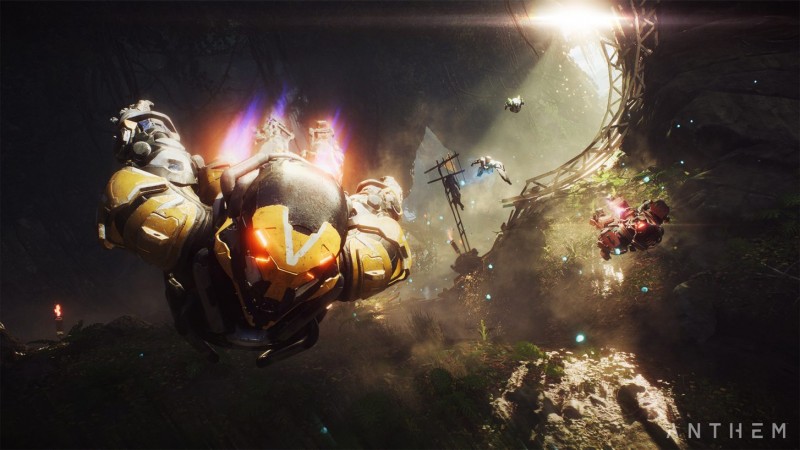
To put that another way, it sounds like you’re suggesting there’s different people who have different opinions about what and who the Shapers were, and those sometimes take on spiritual or religious significance for people, but nobody really factually knows the truth. Is that right?
CR: That’s right. And I would say, it’s going to be religious for some people and purely scientific for others. The faction that we have called the Arcanists, they study the Shapers, but they’re not, they don’t worship them as gods or anything, it’s more scientific for them.
JW: Yeah, they don’t try to figure out the relationship of the Shapers and the Anthem through a religious lens; it’s purely scientific.
Well, the dovetails well with the next question I have. Who are the Arcanists. Is that a designation like a scientist? Or is that an order of people who have gathered together of like mind? And what is their primary interest?
JW: As Cathleen mentioned, they are a group. You go and you want to become an Arcanist, versus it being a title. It’s something you would need to pursue, like a career or a calling. They are the ones that are trying to establish: ‘what are the fundamental rules of this world?’ This world that keeps changing due to the conflict between the Anthem and the Shaper constructs. So they’re trying to lay down the rules. Essentially, they are the scientists. They are the ones you go to for these bigger questions, but they are also the innovators of the world. The creation of technology sits with Arcanists. Now we’ve got offshoots, we’ve got engineers and specialists and things like that, but Arcanists are definitely identified as those that are trying to pursue scientific truth.
What are the Scars? From early glimpses, it seems like the Scars have a pretty strange experience of life, and I wonder if you could describe a little bit about who and what they are.
JW: That is a fine phrase that we will steal and give you no credit for. So yes, you are absolutely correct. They are strange beings, a strange race. Now some of the stuff is shrouded in a bit of mystery, I won’t be getting into today, but I want to carefully make sure that they are not considered animals or anything like that. They have a society. They just have hive minds. There’s more than a nod to an insect colony in how they go about things. How they act. Things like that. It’s more akin to locusts. They’re scavengers. They’re very well known to be scavengers. They’ll strip down Striders or anything they come upon and use it to build their own nests and hives. Their origins are shrouded in mystery, but they are almost like a plague that needs to be contained. And they’re extremely difficult to contain. So they’re part of this constant threat, against Fort Tarsis, against anyone within Bastion, which is the territory that the game takes place in.
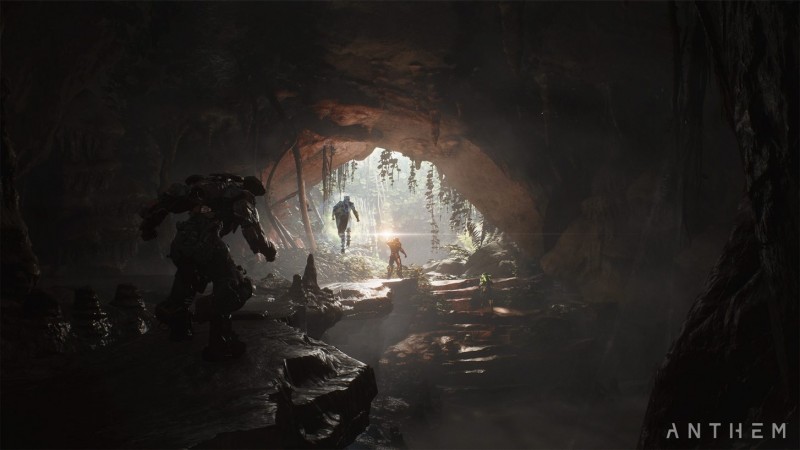
What is the distinction then between Scars and Escari?
JW: The Escari are actually a higher form of Scars. The Escari are Scar. They have just developed into something far more powerful. You get enough Scars together, one of them will sort of evolve into something stronger.
And is there a quality about the Scars and this higher form of Escari where they’re copying other life forms? Is that the idea?
JW: Yes, they’re running around, and they look like people, but I can assure you they are not. They are more mimics than anything.
For lack of a better term, what are the other “alien threats” in the world, if we think about the Scar as being this sort of strange race/entity, are there other creatures that are roaming around out there in the world that aren’t exactly like humans?
CR: Yes, so at the beginning, the very first mission of the game when you go into the Heart of Rage, it is a cataclysm. And the cataclysm is something that is one of the most chaotic events that we come across in the world. And it is Shapers and the Anthem pushing against each other. There are two different kinds of threats that can come from a cataclysm. We have Elementals and Chimera. An elemental is something like the Titan that you fight at the end of the first mission. They are actually born out of the chaos of the cataclysm. So they are a monster born from this conflict with the Anthem of Creation. The Anthem has created these elementals. And then we have something called Chimera. And Chimera are the animals of the world who are essentially changed by cataclysms and by Shaper events. Those are two more of the threats in this world. And then there’s the grabbit. I would not cuddle a grabbit.
What’s a grabbit?
CR: Well a grabbit looks really, kind of gentle and huge, and they sort of hop around. But if you get close and have a really close look at the teeth on a grabbit, those are extremely sharp: that’s a mouthful of sharp razors. And so I wouldn’t trust them. A lot of the fauna in the world of Anthem are actually super deadly, for example we have one with an electric charge that will basically tentpole your javelin right out of the sky. So, some of the animals look innocuous, but they’ll kill you. That’s the thing. This world will kill you.
JW: I imagine the sub-heading of this article to be: Never trust a grabbit.
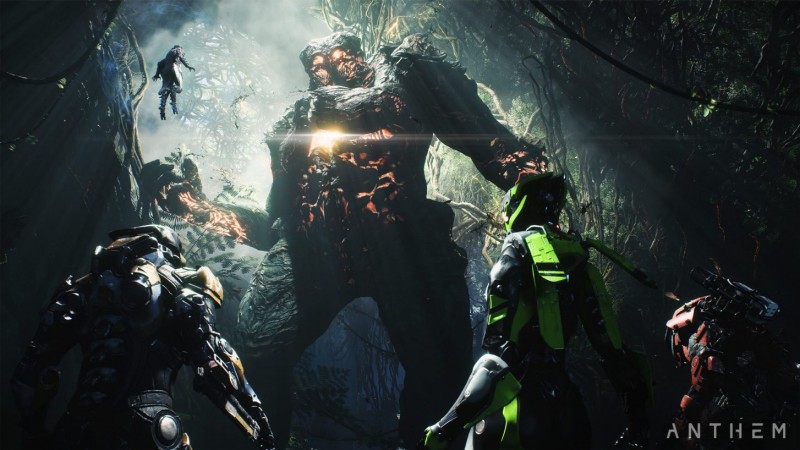
Let’s switch gears a bit and talk about the history of this world, as players will encounter it. Who was Helena Tarsis and why is she remembered so clearly by the people of this world?
CR: So Helena Tarsis was the first leader with the creation of the javelins who founded something called the Legion of Dawn. At that time, years and years ago, people were oppressed by another race called the Urgoth. And so Helena Tarsis with her Legion of Dawn rose up against the Urgoth and defeated them and drove them from Bastion. So, she was instrumental in our people being freed from slavery, because we were slaves to the Urgoth.
Is there anything we know about the Urgoth?
CR: Just that they are bad news.
JW: This was centuries and centuries ago. So it was sort of this great, oppressive race that were completely shattered and defeated by General Tarsis. It’s part of our history.
CR: And they’re also very much people of myth. Throughout the world you’ll find Urgoth statues. There’s a relief of the myth of Helena Tarsis defeating the Urgoth. Very much like the Knights of the Round Table, her story has been mythologized. She inspired those sorts of stories.
Are there other individual figures that you feel are really important in the history of this fictional world?
CR: Well, I’ll just let Jay jump in here after this, but the thing about the Legion of Dawn was after the death of Helena Tarsis, the Legion of Dawn split into three factions. The three factions that we experience in our game, so the Freelancers, the Sentinels, and the Dominion. They each claim Helena Tarsis and the Legion of Dawn as their origin story, but they had a falling out and now they are there completely separate factions.
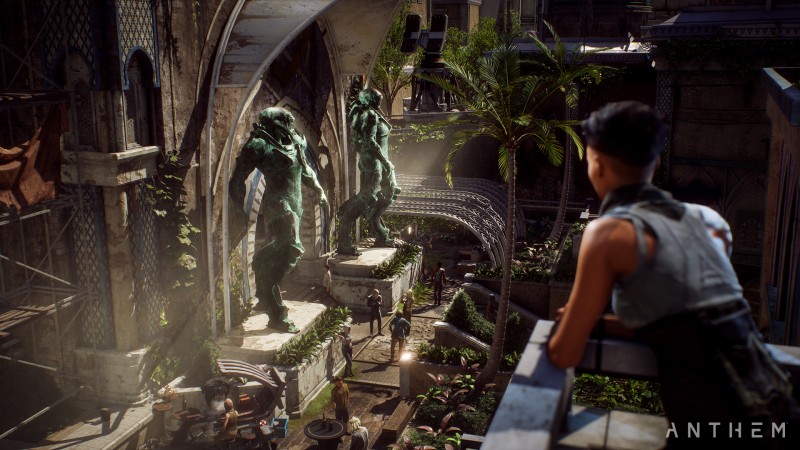
What is the distinction between those three groups?
JW: The fundamental reason for the split is because is that they had different ways of interpreting what General Tarsis did with her life her and acts that she is known for. The Sentinels are the ones that established Fort Tarsis and this gigantic wall. Now the Sentinels believe that this is our island of civilization in this in this sea of monsters and chaos. We will defend this. We are the shields against the chaos of the world versus humanity, and that is where law and order are. So that’s sort of the foundation of the beliefs of Sentinels. “If one of them stands, the wall remains” is something that they say.
Versus Freelancers. Freelancers are beholden to no one, they have no real organization. Freelancers will go out beyond the wall and deal with problems out there. The problems are diverse, they’re either taking care of someone, rescuing someone, helping people, silencing shaper relics when they when they’re out of control. There’s a variety of tasks. And so, between those two groups there’s a bit of friction because they differ in how they want to protect humanity. They both have that goal, but they accomplish it in different ways.
And we have the Dominion which is a different set of beliefs. They are the ones that pursued this oppressive race that held humanity down because they wanted to destroy them, and they have a far more aggressive approach to what they do. And so they have become an expansionist empire, and they have gone north and then not much was heard from them. In our game, the threat of the Dominion is very, very real. And while the world is out to kill you, as we mentioned before, the most recent thing out to kill you is that the Dominion are coming. So, there’s a stark difference between the Dominion and the other two groups that that came from the tradition of General Tarsis.
And the players will be controlling Freelancers?
JW: That’s correct. We figured it would be more interesting for the player if you could fly up beyond the wall and check out what’s there versus standing on the wall.
Fair enough. That would be very different kind of a game. A lot slower paced.
JW: Quite different, yes. More of an RTS.
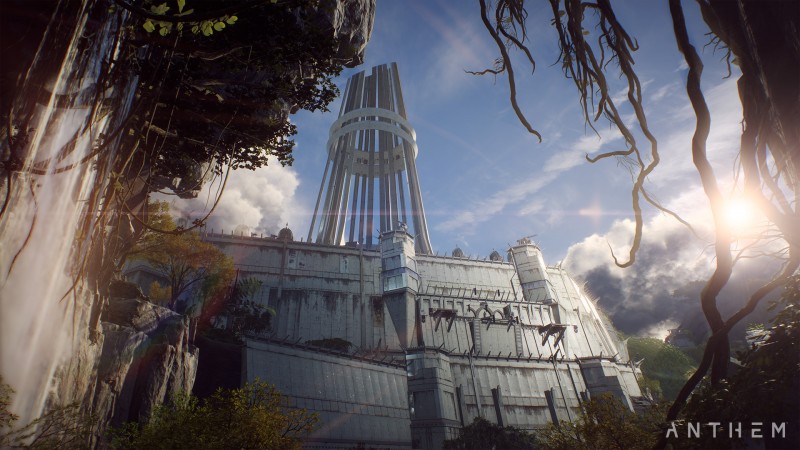
Is it fair to say the Sentinels and the Freelancers are allied? Just maybe not always in complete agreement?
JW: They’re absolutely allies. When it comes down to it they just differ so wildly in how they go about their jobs their vocation that there’s friction there. And there’s always been friction there and a little bit of mistrust. You essentially have the person that stays in the fort and then you’ve got this weird sort of other guy that flies over the wall and deals with these very strange problems, so there’s an element of “I don’t quite understand what you do. I don’t trust what you do.” But in the end they’re both working towards the same goal. They’re both here to protect humanity.
What is the location called Freemark, and what happened to it?
CR: Freemark is another great city in the region of Bastion. There’s Antium. Fort Tarsis is kind of like the stop on the trade route we have, like a smaller sort of place between the two large cities. And Freemark was a was another one of these great cities, and it had a very highly respected and highly-populated Freelancer enclave in it as well. It was actually built to protect a shaper relic called the Cenotaph. The Dominion believed that they had a way, using the Cenotaph, to control the Anthem of Creation. And so they busted their way into Freemark, they messed with the Cenotaph and they caused the cataclysm that became the Heart of Rage which is at the center of our story. Because now the Freelancers want to go back in.The city of Freemark was destroyed, the people died, and it was it was a horrific event, and so the Freelancers goal is to shut down the Heart of Rage because if these cataclysms keep going they just continue to destroy everything around them. They eat the land and they suck everything into their terrible force.
And is there a known way of how to stop these cataclysms?
CR: One of the specializations of the Freelancers is that they deal with Shaper constructs and and part of their goal is to stop the cataclysms before they start. And so they have some special knowledge, but it’s also very much that they’re flying by the seat of their pants. It’s not like “oh, ok. Green wire, red wire and shut it down. Like every situation is different, because every once in a while they’ll come across a Shaper construct or a relic that they’ve never seen before, so it’s a very specialized and dangerous knowledge. We liken them to kind of like fire-jumpers. You know how they’re jumping in to put out sort of oil well fires right?
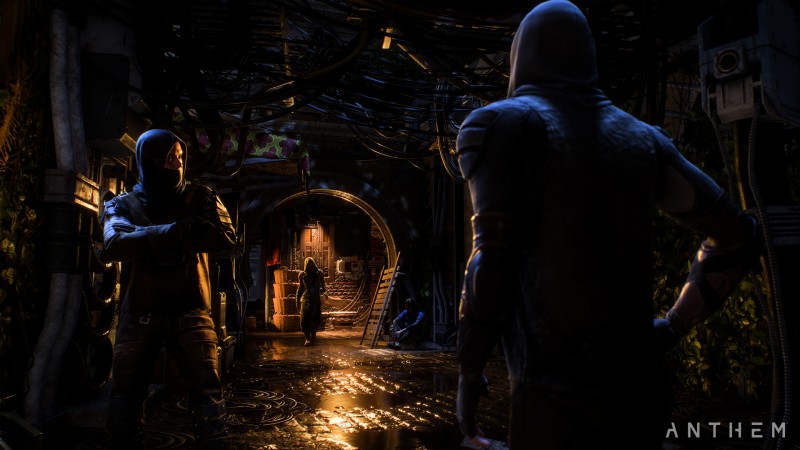
You mention that the threat of the Dominion is a big part of where the story begins, and that there’s this cataclysm that’s ongoing that the Freelancers and the Sentinels are concerned about. What else is happening in the current events of this world?
CR: At the beginning of the game we see that the Freelancers are going in to the Heart of Rage and they’re going to shut it down. And if you’ve played you know that it’s a failure. Because of that failure, the game actually starts two years after that point, and the Freelancers are now really diminished. People don’t trust them. A lot of Freelancers lost their lives trying to shut down the Heart of Rage, so a lot of what you’re doing over the course of the game is to is to rebuild the reputation of the Freelancers.
Is there a leadership structure to the Freelancers? Is there somebody you’re taking orders from?
JW: Unlike the Sentinels which have this sort of very clear hierarchy, Freelancers don’t. They do have a system of respect and they have honorific type titles. We’ve got Grandmaster-type character role, but not because those people are in charge. It is simply they have experience or they have earned a reputation and thus perhaps have more sway. We’ve got a character in a fort, Yarrow, he is a retired Freelancer, but he deals with a lot of Freelancer business. Simply because he has earned that through his experience, and he knows a lot about what is going on. So, while he is not in charge, Freelancers do look up to him as a source of, maybe not authority, but certainly advice. So, yeah. No actual structure to the Freelancer group.
Who and what are cyphers?
CR: Cyphers are altered humans. They are altered by exposure to the element ember. In our world, long-distance communication has always been difficult. And so cyphers only start, these altered beings, only started appearing about 100 years ago?
JW: Yeah, they are recent innovation let’s say.
CR: Yeah. And so, Cyphers, much like Arcanists, they pursue their calling. They go to a place called a Satomi, which is a sort of like a school for cyphers, and they learn to enhance their skills. Once they study they say that a cypher is always a little broken. So, in becoming a cypher they have had give up or have lost a certain part of who they were before. And they sit in amplifier chairs, because they are linked to Freelancers through something called a link in their Javelin suits. They can process information at incredible speed, so they sit in the amplifier chair and they help Freelancers through their mission and they help them if they come across something like a new Shaper construct they’ve never seen, for example. The cyphers are there to support the Freelancers.
Do the cyphers have some particular insight into the Anthem?
CR: Yes. The cyphers are tuned to the Anthem like no one else in the world. They can actually hear it. Freelancers cannot hear it, Sentinels can’t, Dominion can’t, but a cypher can hear it, and so for example in the first mission Faye is very much fighting against the Anthem almost driving her crazy, right? It’s because she can hear it and when you meet up with Owen, Owen is very jealous of the fact that Faye has heard it. It’s very addictive, and part of Faye’s whole journey is that she wants to get back go back to the Heart of Rage because she wants to hear the Anthem finish. She wants to hear the end of the song, at least metaphorically. She is very much driven. It’s almost like catnip, like a “got to get more” sort of thing. So it’s dangerous and seductive.
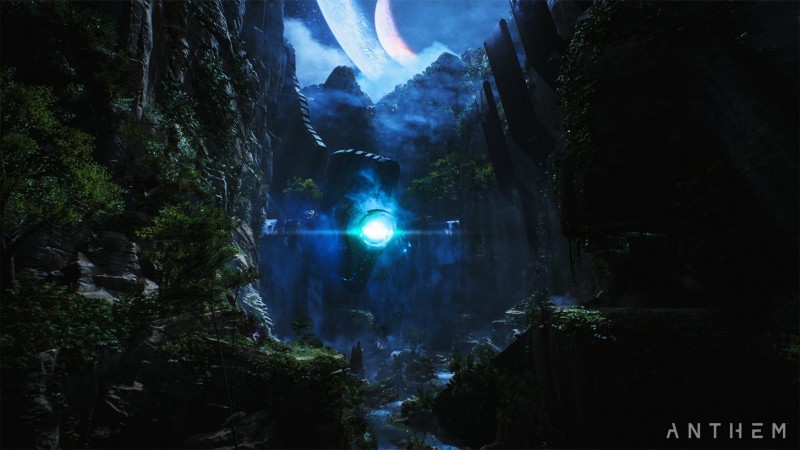
We’ve talked about places like Fort Tarsis and Bastion and I wonder if you could just give me a quick summary of the geography of the game world’s geography.
JW: Sure, basically Cathleen mentioned that Fort Tarsis sits in the middle of an area or region called Bastion. And we have a very large city, the largest city, Antium, down to the south, which we don’t see in this particular game so far; we don’t actually go to visit Antium. Now, Fort Tarsis was kind of a waypoint between Antium and Freemark, which was to the north. Fort Tarsis acts more or less as a frontier between the two because civilization is set up in islands, these fortified cities in the midst of the wilderness – the jungle, the chaos – all that kind of stuff makes it difficult to establish civilization. So, Fort Tarsis was a very critical and necessary step when traveling from Antium to Freemark. And Bastion is the region that actually extends beyond the border of what we’ve established in the game so far.
CR: We can also say that Stralheim is where the dominion are. We know that it’s like a northern region. We don’t go there, but it’s probably on the same continent. Bastion is one of the regions and Stralheim is one of the regions. But, beyond that, it’s all kind of like, “here-be-dragons.”
Is there a name for the actual world?
JW: That’s an excellent question. We’ll stop there.
The last subject I want to address are these suits that the players in interacting with. What are Javelins? What makes them special? Why is it more than just a suit of armor?
JW: There’s a couple foundational components to that. The first one, in the lore of the world itself, humanity was throwing off its shackles once upon a time due to two things: General Tarsis, of course, but it was really the development of the first javelin suits that allowed us to stand against the Urgoth. So, there’s that. The idea that humanity is not built very well to survive in this world without special weapons and special protection. And so, with the invention and innovation of javelin suits, it allows us to not only stand up to our oppressors but to build civilization from scratch. Because once we were on our own and we were free to do what we wanted we were able to build civilization, sort of carve it out of the chaos using javelin suits. Now, in the modern day there’s been refinements and changes and all that. But everyone who goes outside the walls has to be afforded some kind of protection. You’ve seen the giant walkers, the striders: heavily armored, slow moving; that’s the kind of thing that is needed to travel any kind of long distance. So, the javelin suits are these very specialized things. They’re hand-crafted, they’re carefully maintained because they are the link to basic survival within the world of Anthem. There is no survival in this world without javelins.
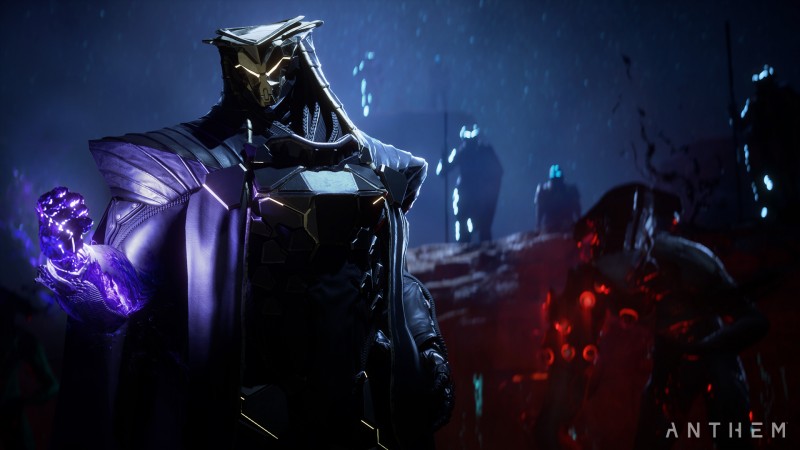
So what are the signets and crowns as they relate to javelins?
JW: You can think of it like a metaphor of a car key and putting it into the ignition; there’s a special connection between pilots and the javelin. It’s also true of someone like an operator, someone who operates a strider, a special connection between that person and this piece of machinery. It’s not just a suit that has servos and is articulated, and all that kind of stuff. There’s a much deeper connection between a person and a machine that occurs between the action of the signet and the crown of that machine itself. Without getting too into crazy detail, it’s good to think of it as a car key going into an ignition; it’s what starts you up, it’s what connects you to that machine, to that javelin.
Beyond what we’ve spoken about, what else are you excited about for players to encounter in the world of Anthem?
CR: Well, I think that I would just mention that you can wander around Fort Tarsis and really get a sense of what the world is like from the people who live there. There are people that you can talk to, there are merchants, there are other cyphers, there’s a bar, of course, (where everybody kicks back), there’s a freelancer enclave and people with stories. And the stories of these people that live in Fort Tarsis intertwine with each other. So, you can meet an old woman and discover the story of her child, who was a freelancer. There’s a gossip who sticks around the fort and there’s somebody named Prospero who’s there to sell you awesomeness for your suit. These people all have lives and that’s really where a lot of that richness from the lore comes from. You know, if you’re going to go out and play with your friends, if you’re friends say: “Well, let’s meet at 8 o’clock then we’ll go out and we’ll fly some missions,” I would hope that people would say: “You know what, I’m going to show up a half hour early and I’m going to check out Fort Tarsis; I’m going to walk around and I’m going to talk to some of the people there because I think that there’s a lot of fun conversations.” And you get to know your crew. Your crew is also there, like any other BioWare game, that’s where you’ll find Owen, Faye, Haluk, Tassyn. You can talk to them and learn a little bit more about them and get to know them better.
JW: I think to add on to that abut the detail of Fort Tarsis, which is set up a bit like it’s set up like a small town, one of the great bits that I discovered as we moved along in development is slapping on the suit and not having an endpoint, not having a marker out in the world. The artists have done such a beautiful job crafting this world. We’ve done our best to try to fill up with things to discover. And so, you don’t need to feel pressured to be on a directed mission. Get out there, and find out what can be discovered. I mean, it’s a game about exploration and it’s a big, giant world and you have this excellent way to explore that. Don’t miss the beauty of it. That’s my advice.
Anthem is available today for PC players with EA’s Origin Access Premier and as a 10-hour trial on Xbox One, and is available on all platforms (PS4, Xbox One, and PC) on February 22.
